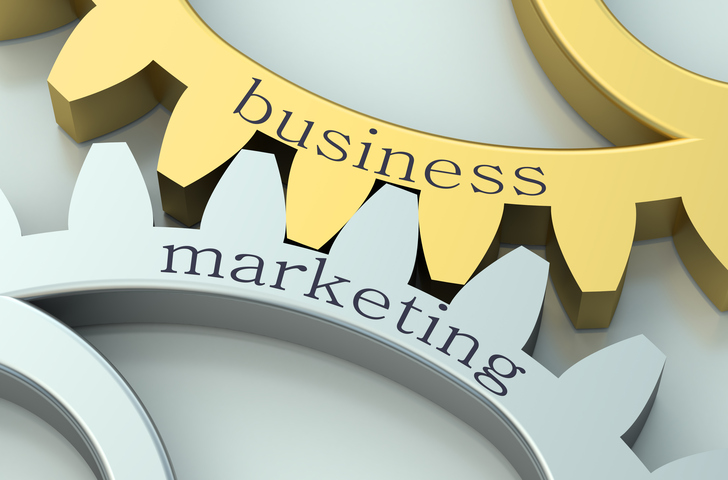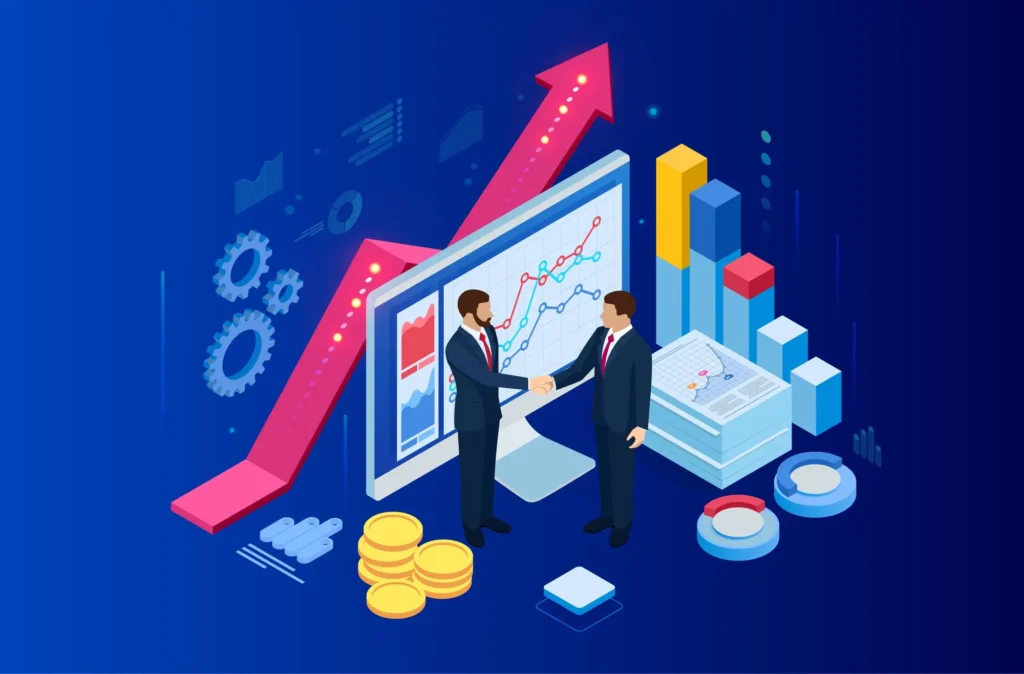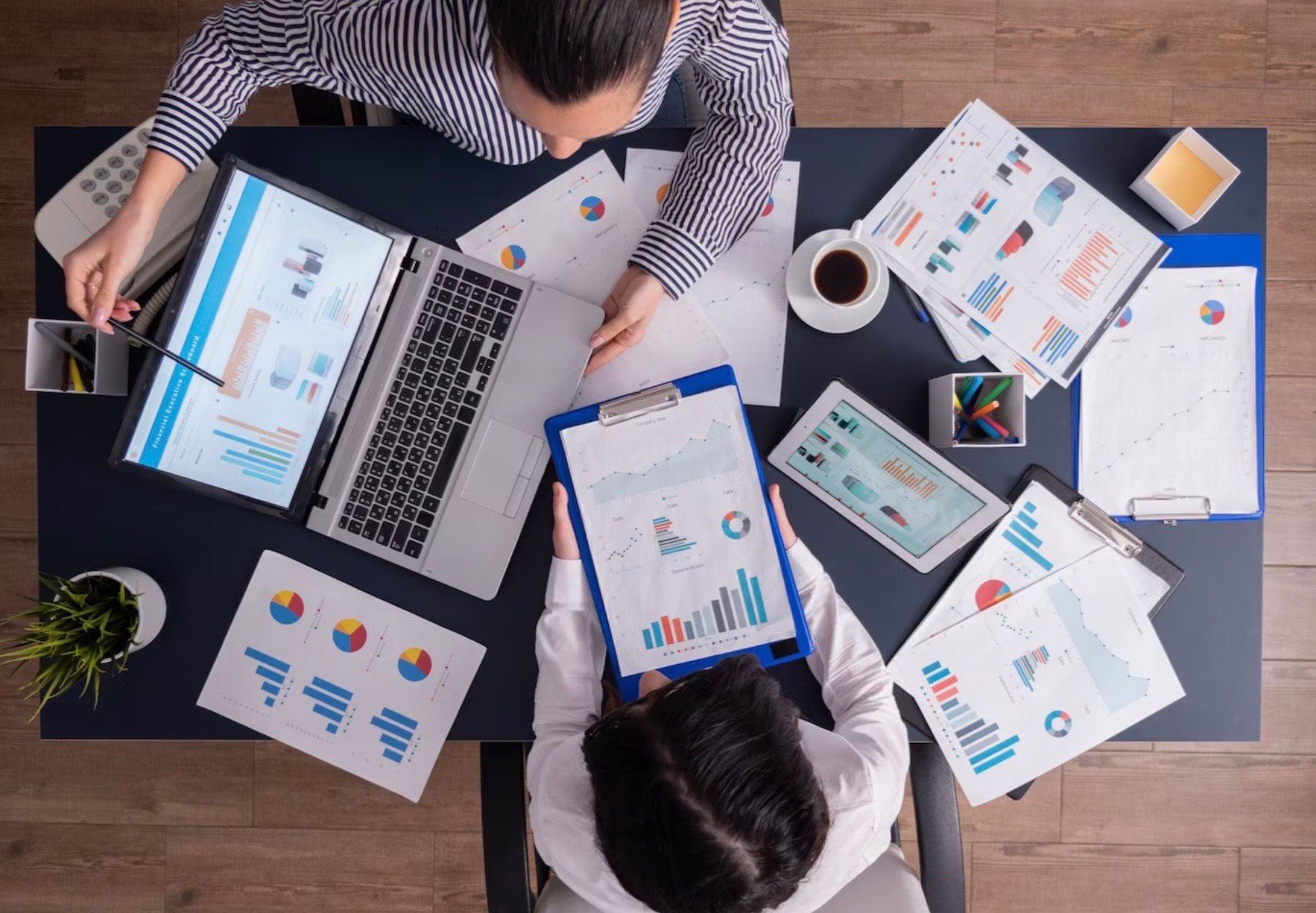
Introduction
Business Strategy – In the dynamic landscape of 2025, businesses are compelled to adapt and innovate continually. The rapid evolution of technology, shifting consumer expectations, and global socio-economic changes necessitate a strategic approach that is both agile and forward-thinking. This article delves into the contemporary trends in business strategy, emphasizing their relevance to society and the profound impact of recent innovations.
The Integration of Artificial Intelligence in Business Operations

In the rapidly evolving business environment of 2025, Artificial Intelligence (AI) has become a pivotal force, reshaping operations across industries. This transformation is not merely a technological shift but a profound change influencing societal dynamics and innovation trajectories. This article explores the current state of AI integration in business operations, its relevance to everyday life, and the far-reaching impacts of these innovations.
The Current Landscape of AI in Business
Ubiquity of AI Technologies
By 2025, AI technologies have permeated various sectors, from healthcare and finance to retail and logistics. Businesses leverage AI to enhance efficiency, improve customer experiences, and gain competitive advantages. The adoption of AI is no longer a novelty but a necessity for survival and growth in the modern marketplace.
Key Areas of AI Application
Customer Service Automation: AI-driven chatbots and virtual assistants handle customer inquiries, providing instant support and freeing human agents for complex issues.
Predictive Analytics: Machine learning algorithms analyze data to forecast market trends, enabling proactive decision-making.
Supply Chain Optimization: AI enhances logistics by predicting demand fluctuations and optimizing inventory management.
Personalized Marketing: AI analyzes consumer behavior to tailor marketing strategies, increasing engagement and conversion rates.
Societal Relevance of AI Integration
Enhancing Daily Life
The integration of AI into business operations directly impacts consumers by providing personalized services, reducing costs, and improving product availability. For instance, AI-driven recommendation systems help consumers discover products aligned with their preferences, enhancing shopping experiences.
Job Market Transformation
AI’s role in automating routine tasks leads to a shift in the job market. While some fear job displacement, AI also creates new opportunities in AI development, maintenance, and oversight. The demand for skills in AI ethics, programming, and data analysis has surged, prompting educational institutions to adapt their curricula accordingly.
Ethical and Privacy Considerations
The widespread use of AI raises concerns about data privacy and ethical decision-making. Businesses must navigate these issues by implementing transparent AI systems and ensuring compliance with evolving regulations to maintain public trust.
Innovations Driving AI Integration
Autonomous AI Agents
Recent advancements have led to the development of autonomous AI agents capable of performing tasks without human intervention. These agents can manage customer interactions, process transactions, and even detect fraud, significantly reducing operational burdens on human staff. For example, in 2025, AI agents can converse with customers, plan subsequent actions, process payments, check for fraud, and complete shipping actions seamlessly.
Generative AI in Creative Industries
Generative AI has made significant inroads into creative sectors, including fashion and design. By analyzing vast datasets, AI can generate new designs, predict fashion trends, and customize products to individual preferences. This capability not only accelerates the design process but also democratizes creativity, allowing for more inclusive and diverse expressions in fashion. The rapid adoption of generative AI in retail is enhancing supply chains and predictive analytics, leading to more personalized customer experiences.
AI-Driven Safety and Efficiency in Logistics
Companies in the logistics sector are employing AI to enhance safety and operational efficiency. For instance, a Texas-based moving company has integrated AI to monitor driver behavior, optimize routing, and reduce liability. This implementation has led to a 4.5% reduction in accidents within the first three months, showcasing AI’s potential in improving workplace safety and efficiency.
Impact of AI Innovations on Society
Economic Growth and Competitiveness
AI integration drives economic growth by enhancing productivity and fostering innovation. Businesses that effectively implement AI gain a competitive edge, leading to industry-wide advancements and the creation of new markets. However, this also necessitates continuous learning and adaptation from the workforce to keep pace with technological changes.
Democratization of Technology
AI has the potential to democratize access to technology, enabling small and medium-sized enterprises (SMEs) to compete with larger corporations. Cloud-based AI services offer scalable solutions that are financially accessible, allowing SMEs to leverage AI for various applications, from customer service to data analytics. This accessibility fosters innovation at all business levels, contributing to a more dynamic and competitive market landscape.
Challenges and Considerations
Data Security: As AI systems rely heavily on data, ensuring the security and privacy of information is paramount to prevent breaches and maintain consumer trust.
Bias and Fairness: AI systems can inadvertently perpetuate existing biases present in their training data. Continuous monitoring and updating of AI models are necessary to promote fairness and equity.
Regulatory Compliance: Navigating the complex landscape of AI regulations requires businesses to stay informed and adaptable, ensuring their AI applications comply with local and international laws.
Future Outlook
The trajectory of AI integration in business operations points toward increasingly autonomous systems capable of complex decision-making. The focus is shifting from mere automation to creating AI that can learn and adapt, providing more nuanced and effective solutions. As AI continues to evolve, its symbiotic relationship with human workers will redefine job roles, emphasizing the importance of human oversight, ethical considerations, and continuous learning.
In conclusion, the integration of Artificial Intelligence into business operations by 2025 has transformed industries, influenced societal structures, and spurred innovation. While challenges persist, the benefits of AI adoption are profound, offering enhanced efficiency, personalized customer experiences, and new economic opportunities. Businesses that strategically implement AI stand to thrive in this dynamic landscape, contributing to a future where technology and human ingenuity coalesce to drive progress.
Embracing Sustainability and the Circular Economy
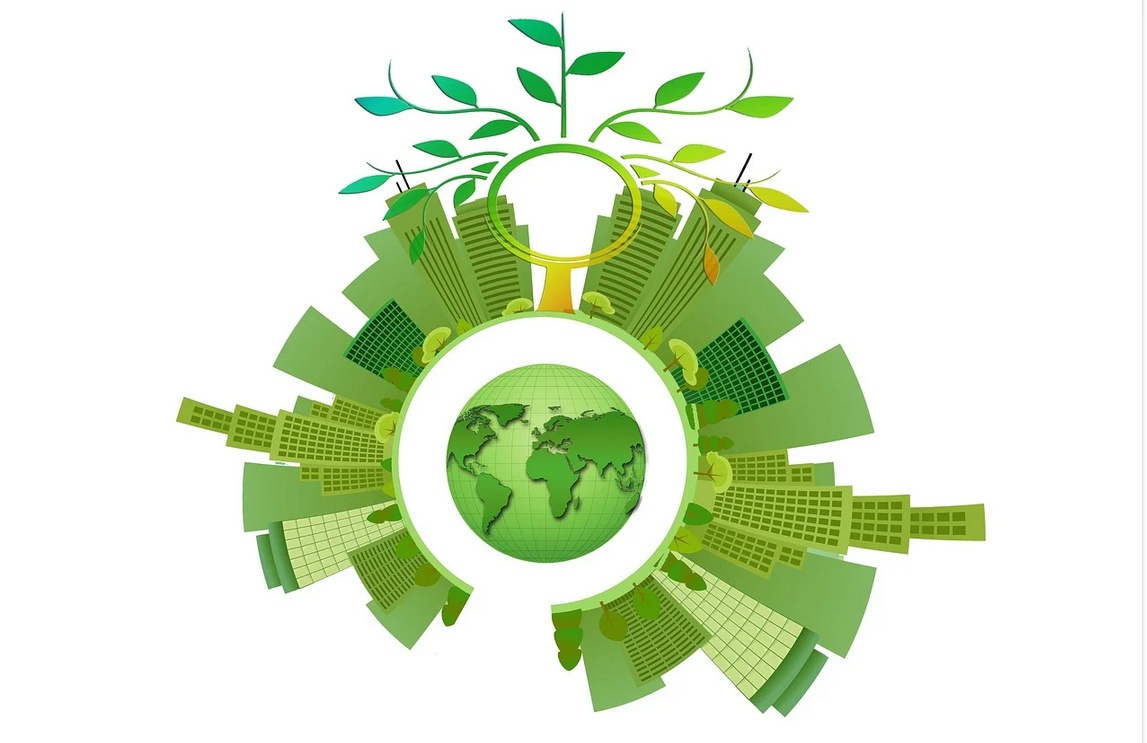
In recent years, the concepts of sustainability and the circular economy have gained significant traction, transforming from niche environmental concerns into central tenets of modern business strategies and societal practices. As we progress through 2025, these paradigms are not only influencing corporate policies but also reshaping daily life, fostering innovation, and addressing pressing global challenges.
Understanding Sustainability and the Circular Economy
Sustainability refers to the practice of meeting present needs without compromising the ability of future generations to meet theirs. It encompasses environmental stewardship, social responsibility, and economic viability, aiming for a harmonious balance between human activities and the planet’s health.
The Circular Economy is an economic model that contrasts with the traditional linear “take-make-dispose” approach. Instead, it emphasizes designing out waste and pollution, keeping products and materials in use, and regenerating natural systems. This model seeks to create a closed-loop system where resources are continually reused, refurbished, or recycled, minimizing the extraction of finite resources and reducing environmental impact.
The Current Landscape: A Shift Towards Circularity
Business Adoption of Circular Practices
Businesses worldwide are increasingly recognizing the economic and environmental benefits of adopting circular economy principles. This shift is driven by several factors:
Resource Scarcity: As natural resources become scarcer and more expensive, companies are seeking ways to use materials more efficiently and sustainably.
Consumer Demand: Today’s consumers are more environmentally conscious, often favoring brands that demonstrate a commitment to sustainability.
Regulatory Pressures: Governments are implementing stricter environmental regulations, incentivizing businesses to reduce waste and emissions.
Innovations in Circular Business Models
Several innovative approaches exemplify the integration of circular economy principles into business operations:
Product-as-a-Service (PaaS): Companies retain ownership of products and offer them as services, ensuring products are returned, refurbished, and reused.
Design for Longevity: Products are designed with durability and upgradability in mind, reducing the frequency of replacement and waste generation.
Resource Recovery: Businesses implement systems to reclaim and recycle materials from end-of-life products, turning waste into valuable inputs.
Societal Relevance: Impact on Daily Life
The integration of sustainability and circular economy principles profoundly affects various aspects of daily life:
Consumer Behavior and Lifestyle Changes
Waste Reduction: Individuals are increasingly adopting zero-waste lifestyles, utilizing refillable containers, and supporting businesses that offer sustainable packaging options.
Mindful Consumption: There is a growing trend towards purchasing high-quality, durable goods and valuing experiences over material possessions.
Economic Opportunities and Job Creation
Green Jobs: The transition to a circular economy is generating employment in sectors like recycling, renewable energy, and sustainable product design.
Local Economies: Supporting local, sustainable businesses fosters community resilience and reduces the carbon footprint associated with transportation.
Environmental Benefits
Pollution Reduction: Circular practices decrease pollution by minimizing waste and encouraging the use of non-toxic, sustainable materials.
Biodiversity Conservation: Reducing resource extraction and pollution helps preserve natural habitats and biodiversity.
Innovations Driving Sustainability and Circularity
Technological Advancements
Digital Platforms: Online marketplaces and sharing platforms facilitate the reuse and sharing of products, extending their lifecycle and reducing waste.
Advanced Recycling Technologies: Innovations in recycling processes enable the efficient recovery of materials from complex products, such as electronics.
Policy and Regulatory Developments
Extended Producer Responsibility (EPR): Policies that hold manufacturers accountable for the entire lifecycle of their products, incentivizing sustainable design and end-of-life recovery.
Circular Economy Action Plans: Governments are developing comprehensive strategies to promote circular practices across industries, setting targets for waste reduction and resource efficiency.
Corporate Commitments
Sustainable Supply Chains: Companies are auditing their supply chains to ensure ethical sourcing, reduced emissions, and minimal environmental impact.
Circular Product Design: Businesses are investing in research and development to create products that are easier to repair, upgrade, and recycle.
Challenges and Considerations
While the shift towards sustainability and a circular economy offers numerous benefits, several challenges must be addressed:
Economic Transition: Shifting from a linear to a circular model requires significant investment and may disrupt existing business practices.
Consumer Awareness: Educating consumers about the benefits of circular products and practices is essential for widespread adoption.
Infrastructure Development: Establishing efficient systems for recycling, refurbishment, and resource recovery is critical to support circular activities.
The Path Forward: Embracing Circularity
To fully realize the potential of sustainability and the circular economy, collective action is required from businesses, governments, and individuals:
Collaborative Efforts: Partnerships between stakeholders can drive innovation, share best practices, and develop standardized approaches to circularity.
Investment in Research: Funding for sustainable technologies and circular business models can accelerate the transition and make these practices more economically viable.
Policy Support: Governments can create an enabling environment through incentives, regulations, and public awareness campaigns promoting circular practices.
In conclusion, embracing sustainability and the circular economy is not merely an environmental imperative but a strategic approach that offers economic resilience, societal well-being, and a sustainable future. By reimagining how we produce, consume, and manage resources, we can create a system that benefits both people and the planet.
The Rise of Remote and Hybrid Work Models

The workplace has undergone a dramatic transformation over the past few years, with remote and hybrid work models emerging as dominant trends. While remote work was already gaining traction before the COVID-19 pandemic, the global crisis accelerated its adoption, forcing companies and employees to rethink the traditional office environment. Today, remote and hybrid work are no longer just temporary solutions; they are reshaping industries, redefining productivity, and altering the way we approach work-life balance.
The Evolution of Work Models
The Pre-Pandemic Office Culture
Traditionally, work was synonymous with physical office spaces. Employees commuted daily, attended in-person meetings, and worked fixed hours. While flexible work arrangements existed, they were largely limited to freelancers, consultants, and specific tech companies. However, as technology advanced, organizations started experimenting with remote work policies, recognizing the benefits of increased flexibility.
The Pandemic’s Impact
The COVID-19 pandemic forced businesses to adopt remote work almost overnight. Companies invested in digital infrastructure, employees adapted to home offices, and virtual collaboration tools became essential. What was initially a crisis response soon evolved into a preferred working style for many employees. Organizations realized that remote work could drive productivity, reduce overhead costs, and improve employee satisfaction.
The Emergence of Hybrid Work
As restrictions eased, many businesses sought a middle ground between full-time remote work and returning to traditional office settings. Hybrid work models—where employees split their time between remote and in-office work—became the preferred choice for many companies. This model offers flexibility while maintaining opportunities for in-person collaboration and team bonding.
Key Trends Driving Remote and Hybrid Work
1. Advancements in Technology
The rise of remote work has been fueled by digital innovations. Cloud computing, collaboration tools like Slack and Microsoft Teams, and video conferencing platforms such as Zoom have made virtual work seamless. The integration of AI and automation further enhances efficiency by streamlining workflows, scheduling meetings, and even monitoring productivity.
2. Shifting Employee Preferences
Employees now prioritize flexibility and work-life balance more than ever. Surveys show that workers value the ability to choose where and when they work, with many expressing a preference for hybrid models. Organizations that offer remote options are more likely to attract and retain top talent.
3. Cost Savings for Companies
Businesses have recognized that remote work reduces operational costs. By downsizing office spaces, minimizing utility expenses, and cutting down on business travel, companies can allocate resources more efficiently. Some organizations have even transitioned to fully remote operations, eliminating the need for physical offices altogether.
4. Global Talent Pool
Remote work removes geographical barriers, allowing companies to hire from a diverse, global talent pool. This shift enhances workforce diversity, fosters innovation, and enables businesses to find highly skilled professionals regardless of their location.
5. Increased Productivity and Employee Well-Being
Contrary to initial concerns, studies suggest that remote work can boost productivity. Employees report fewer distractions, reduced commuting stress, and greater autonomy over their schedules. However, businesses must address challenges like isolation and burnout by promoting healthy work habits and fostering virtual team engagement.
Challenges and Considerations
1. Maintaining Company Culture
A strong company culture is vital for employee engagement and collaboration. Remote work can create a sense of disconnection, making it essential for organizations to implement virtual team-building activities, regular check-ins, and clear communication strategies.
2. Cybersecurity and Data Protection
With employees working from various locations, cybersecurity risks have increased. Companies must invest in secure networks, multi-factor authentication, and employee training to mitigate threats and protect sensitive information.
3. Balancing Work and Personal Life
While remote work offers flexibility, it can also blur the boundaries between professional and personal life. Employers should encourage work-life balance by setting clear expectations, promoting mental health initiatives, and discouraging excessive overtime.
4. Equity and Inclusivity
Not all employees have equal access to reliable internet, quiet workspaces, or necessary equipment. Companies must address these disparities by providing stipends, offering flexible work arrangements, and ensuring inclusive remote work policies.
The Future of Work: What Lies Ahead?
1. Hybrid Work as the Standard
While some companies are embracing fully remote operations, hybrid work is expected to become the standard model. Organizations will likely implement flexible schedules, allowing employees to choose their in-office days based on team needs and personal preferences.
2. The Role of AI and Automation
Artificial intelligence and automation will continue to enhance remote work. From AI-driven project management tools to virtual reality meetings, technology will further bridge the gap between remote and in-person collaboration.
3. Redefining Office Spaces
Traditional office setups will evolve into collaborative hubs rather than daily workspaces. Companies may adopt co-working spaces or flexible office arrangements to accommodate hybrid workforces.
4. Legislative and Policy Changes
As remote work becomes mainstream, governments may introduce new labor laws, tax regulations, and employment policies to address the unique challenges of remote and hybrid work arrangements.
Conclusion
The rise of remote and hybrid work models marks a significant shift in the way we approach employment, productivity, and workplace dynamics. By embracing flexibility, leveraging technology, and prioritizing employee well-being, businesses can thrive in this new era of work. As the landscape continues to evolve, organizations must remain adaptable, ensuring that both employers and employees benefit from this transformational change.
Hyper-Personalization Through Data Analytics
The digital revolution has transformed the way businesses interact with consumers. Traditional marketing strategies that relied on broad demographic data are being replaced by hyper-personalization, a data-driven approach that tailors experiences to individual customer preferences, behaviors, and needs. By leveraging advanced analytics, artificial intelligence (AI), and machine learning (ML), businesses can create customized interactions that enhance customer satisfaction, improve retention, and drive revenue growth.
Understanding Hyper-Personalization
What is Hyper-Personalization?
Hyper-personalization goes beyond basic personalization techniques like using a customer’s name in an email. It involves real-time data analysis, behavioral tracking, and AI-driven insights to deliver highly tailored content, product recommendations, and experiences. This approach considers multiple touchpoints, including past purchases, browsing history, social media activity, and even contextual factors such as location and time of day.
How Does It Differ from Traditional Personalization?
While traditional personalization might segment customers into broad categories, hyper-personalization treats each customer as a unique individual. For example:
Traditional Personalization: Sending a generic email campaign to all customers who purchased a product in the last month.
Hyper-Personalization: Sending a dynamically generated email with product recommendations based on a customer’s recent browsing behavior, purchase history, and preferences.
The Role of Data Analytics in Hyper-Personalization
1. Customer Data Collection
Data is the foundation of hyper-personalization. Businesses collect data from various sources, including:
Website interactions (e.g., pages visited, time spent on site)
Purchase history and transaction data
Social media engagement
Mobile app usage
Customer service interactions
2. AI and Machine Learning Algorithms
AI and ML play a crucial role in analyzing customer data and identifying patterns that may not be immediately visible. These technologies enable businesses to:
Predict customer needs before they arise
Provide personalized product recommendations
Automate personalized messaging across multiple channels
3. Real-Time Data Processing
Unlike traditional data analytics, which relies on historical data, hyper-personalization utilizes real-time analytics to deliver timely and relevant experiences. For instance:
Streaming services like Netflix suggest content based on what a user is currently watching.
E-commerce platforms display dynamic product recommendations based on live browsing behavior.
Industries Benefiting from Hyper-Personalization
1. E-Commerce
Retailers use hyper-personalization to improve customer experiences by:
Recommending products based on past purchases and browsing behavior.
Sending personalized discounts and promotions.
Offering a seamless omnichannel shopping experience.
2. Financial Services
Banks and financial institutions leverage hyper-personalization to provide:
Customized investment and savings recommendations.
Real-time fraud detection based on unusual transaction patterns.
Personalized financial planning advice.
3. Healthcare
Healthcare providers use hyper-personalization to:
Offer tailored treatment plans based on patient history and genetic data.
Send reminders for medication and follow-up appointments.
Improve patient engagement through AI-powered chatbots.
4. Entertainment and Media
Streaming platforms such as Netflix and Spotify personalize content recommendations to keep users engaged. AI-driven analytics determine what content will appeal to an individual based on their viewing or listening history.
5. Travel and Hospitality
Hotels and airlines leverage hyper-personalization to:
Provide tailored travel recommendations based on past trips and preferences.
Offer dynamic pricing based on customer demand and behavior.
Send location-based offers and promotions.
Benefits of Hyper-Personalization
1. Enhanced Customer Experience
By delivering relevant content and recommendations, businesses can create more meaningful interactions that resonate with customers.
2. Increased Customer Engagement and Loyalty
Customers are more likely to engage with brands that understand their needs. Personalized experiences foster brand loyalty and long-term relationships.
3. Higher Conversion Rates
Hyper-personalized campaigns often lead to better conversion rates. When customers receive content that aligns with their preferences, they are more likely to make a purchase.
4. Optimized Marketing Spend
Instead of spending money on generic marketing campaigns, businesses can allocate resources to targeted strategies that yield higher returns.
Challenges and Ethical Considerations
1. Data Privacy and Security
With increasing regulations like GDPR and CCPA, businesses must ensure compliance when collecting and processing customer data. Transparency and user consent are critical.
2. Balancing Personalization and Intrusiveness
Over-personalization can make customers feel uncomfortable. Striking a balance between relevant recommendations and respecting user boundaries is essential.
3. Managing Data Silos
Many organizations struggle with fragmented data across different systems. Integrating data sources and ensuring seamless data flow is crucial for effective hyper-personalization.
The Future of Hyper-Personalization
As technology continues to advance, hyper-personalization will become even more sophisticated. Future trends include:
AI-Driven Chatbots: More human-like interactions using natural language processing (NLP).
Voice Search Personalization: Customizing experiences based on voice interactions.
Augmented Reality (AR) and Virtual Reality (VR): Personalized virtual shopping and experiences.
Blockchain for Data Security: Enhancing transparency and control over personal data.
Conclusion
Hyper-personalization through data analytics is revolutionizing customer engagement across industries. By leveraging AI, real-time data, and predictive analytics, businesses can create tailored experiences that enhance customer satisfaction and drive business growth. However, as organizations embrace this approach, they must also address challenges related to data privacy and ethical use. The future of hyper-personalization lies in striking a balance between innovation and responsible data practices, ensuring that customers feel valued while maintaining trust in the brands they interact with.
Hyperautomation and Intelligent Processes
Hyperautomation involves the use of advanced technologies, including AI and machine learning, to automate complex business processes.
Streamlining Operations
By automating repetitive and time-consuming tasks, businesses can improve efficiency and reduce operational costs. This allows employees to focus on strategic activities that require human creativity and problem-solving skills.
Improving Accuracy and Compliance
Automation ensures consistency and accuracy in processes, which is crucial for compliance and quality assurance. It reduces the risk of human error and enhances the reliability of business operations.
The Imperative of Innovation in Business Strategy
Innovation is the driving force behind business growth and competitiveness. A strategic approach to innovation enables companies to adapt to market changes and meet evolving consumer demands.
Fostering a Culture of Innovation
Encouraging creativity and experimentation within the organization leads to the development of new products, services, and processes. This culture of innovation is essential for staying ahead in a rapidly changing market.
Aligning Innovation with Business Objectives
Strategic innovation involves aligning new initiatives with the company’s overall goals and market positioning. This ensures that innovation efforts contribute to long-term success and sustainability.
Conclusion
The business landscape of 2025 is characterized by rapid technological advancements, evolving consumer expectations, and a heightened focus on sustainability. By integrating AI, embracing sustainable practices, adopting flexible work models, and prioritizing innovation, businesses can navigate these changes effectively. These strategies not only enhance operational efficiency and competitiveness but also contribute positively to society, reflecting a holistic approach to modern business strategy.
Read Also: Unveiling the Business Strategies of Corruptors in Indonesia






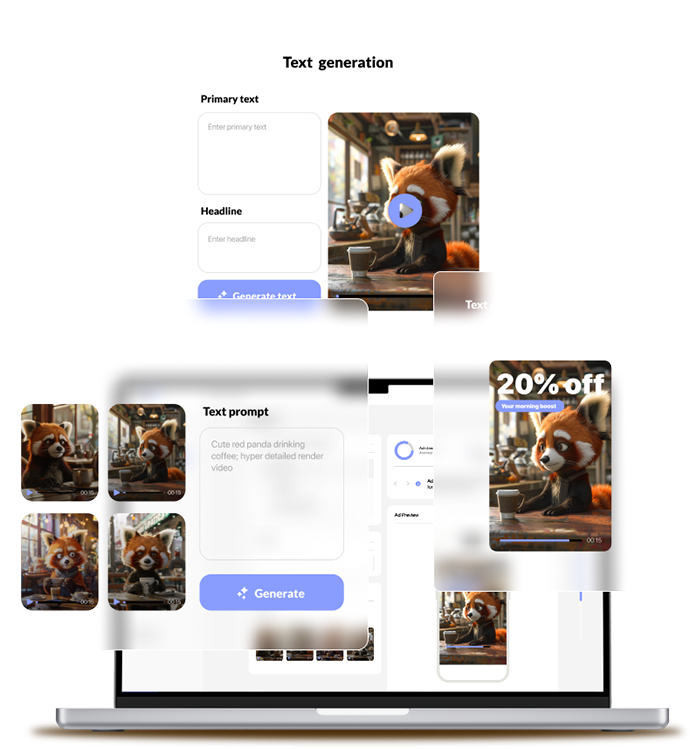



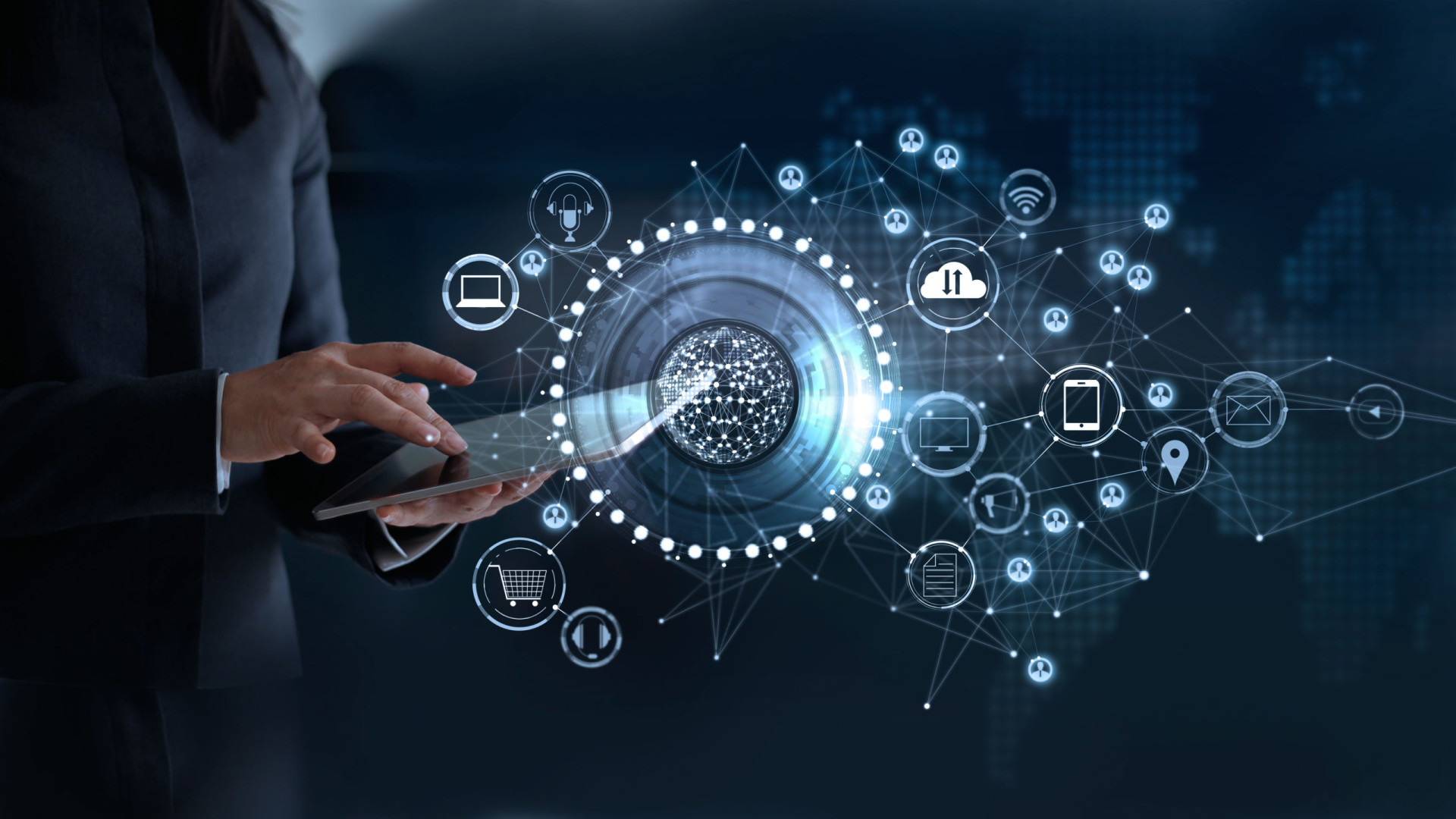
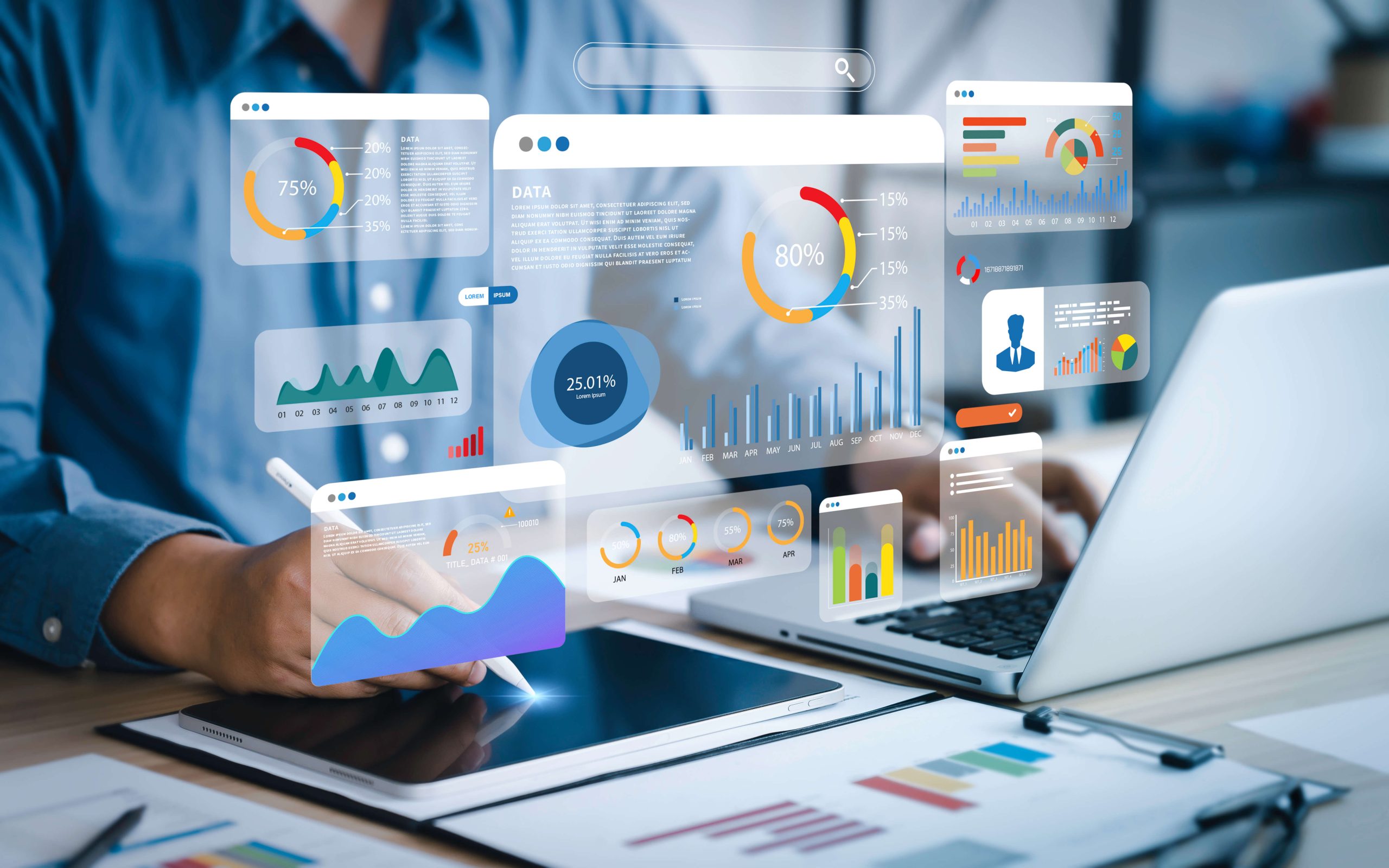
:max_bytes(150000):strip_icc()/Term-Definitions_Digital-Marketing-5ae6ea1aee934b02a94a1a4d9401443d.jpg)
